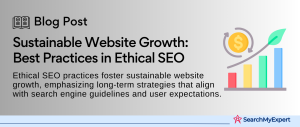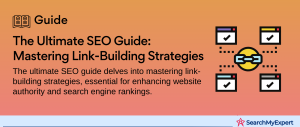Understanding Technical SEO: Enhance Website Performance
Introduction to Technical SEO
Technical SEO stands at the heart of today’s digital marketing. It’s a component of search engine optimization focusing on the nitty-gritty of website infrastructure, ensuring that search engines can effectively crawl, interpret, and index the site’s content. This facet of SEO is pivotal, not just for the robots of search engines but also for the humans who navigate these digital realms.
The Vital Role of Technical SEO
At its core, technical SEO is like the backstage crew of a theater – often unseen but crucial for the show’s success. It’s about optimizing the foundation and structure of a website, making sure that search engines can effortlessly find, crawl, and index its pages. This optimization leads to improved visibility in search engine results, drawing the spotlight to your content.
But that’s only half the story. Technical SEO also plays a significant role in enhancing user experience. Fast loading times, easy navigation, and mobile optimization are all fruits of effective technical SEO. They keep visitors engaged, reduce bounce rates, and ultimately contribute to higher rankings in search engine results.
So, why is technical SEO a cornerstone for online success? Because it creates a win-win scenario: it makes your website appealing to search engines and ensures a seamless, enjoyable experience for your users. It’s the backbone that supports all other SEO efforts, making them more effective and impactful.
Crawlability and Indexing – The Pillars of Technical SEO
The Role of Search Engine Crawlers
Imagine search engine crawlers as explorers charting the vast digital landscape. These crawlers, also known as spiders or bots, are tasked with discovering and understanding the content of websites. They navigate the web, following links from one page to another, gathering data that search engines use to index and rank pages.
Key Technical Factors Impacting Crawlability
- Robots.txt File: This is the gatekeeper of your website. It tells search engines which parts of your site should or shouldn’t be crawled. Proper configuration of the robots.txt file is crucial to ensure that search engines are looking at the right content.
- Sitemaps: A sitemap is like a map for your website. It guides search engines to all the important pages, making sure none are missed during the crawling process.
- Internal Linking Structure:
Internal links are the pathways that connect different pages within your website. A well-structured internal linking system makes it easier for crawlers to navigate and understand the hierarchy and relationship between pages.
The Concept of Indexing
After crawling comes indexing. Indexing is the process of adding web pages into Google’s massive database. When a page is indexed, it becomes eligible to show up in search results. The goal of technical SEO is to ensure that all relevant and valuable pages of your website are indexed correctly, enhancing your site’s visibility in organic search results.
The Crucial Impact of Website Speed on User Experience and SEO
Why Speed Matters
In the digital world, speed is king. Website speed directly influences user experience, engagement, and SEO rankings. A fast-loading website is akin to a swift and efficient service in a physical store; it keeps customers happy and more likely to return.
Google has made it clear: site speed is a ranking factor. Slow-loading websites not only frustrate users but also lose favor with search engines, resulting in lower visibility in search results. In short, if your website is slow, both your users and your SEO suffer.
Factors Influencing Website Performance
- Page Loading Speed:The time it takes for your website to become fully interactive is crucial. Every second counts, as longer loading times dramatically increase bounce rates.
- Image Optimization:Large, unoptimized images are one of the main culprits for slow website performance. Optimizing image sizes and formats can significantly boost loading speeds.
- Caching Mechanisms: Implementing caching can greatly enhance site speed. Caching stores copies of your website’s files, reducing the load on the server and speeding up access for return visitors.
Tips for Enhancing Website Speed and Performance
- Minimize HTTP Requests: Reduce the number of elements (like images, scripts, and CSS files) on your pages.
- Enable Compression:
Use tools like Gzip to reduce the size of your CSS, HTML, and JavaScript files. - Leverage Browser Caching:
Set an expiry date or a maximum age for your cacheable resources. - Optimize Images:
Ensure your images are no larger than they need to be, and consider using formats like JPEG or PNG.
The Significance of Mobile-Friendly Websites
The Mobile-First Approach
With an increasing number of users accessing the internet via mobile devices, having a mobile-friendly website is no longer optional; it’s essential. Google’s mobile-first indexing means that the mobile version of your website becomes the primary version for indexing and ranking.
Understanding Responsive Design
Responsive design is the art of creating web pages that automatically adjust and adapt to various screen sizes. This approach ensures that your website looks and functions perfectly across all devices, from desktops to smartphones.
Best Practices for Optimizing for Various Devices
- Flexible Grid Layouts: Use fluid grid layouts that adapt to the screen size, rather than fixed-width layouts.
- Adaptive Images: Ensure that your images resize and adjust to fit different screens.
- Touchscreen Navigation: Make navigation easy for touchscreen users with larger, easy-to-tap buttons.
- Test on Multiple Devices: Regularly test your website’s performance and appearance on various devices to ensure optimal user experience.
By embracing responsive design, you not only cater to the vast mobile audience but also improve your website’s SEO and user engagement, making your digital presence more effective and far-reaching.
The Significance of Mobile-Friendly Websites
The Mobile-First Approach
With an increasing number of users accessing the internet via mobile devices, having a mobile-friendly website is no longer optional; it’s essential. Google’s mobile-first indexing means that the mobile version of your website becomes the primary version for indexing and ranking.
Understanding Responsive Design
Responsive design is the art of creating web pages that automatically adjust and adapt to various screen sizes. This approach ensures that your website looks and functions perfectly across all devices, from desktops to smartphones.
Best Practices for Optimizing for Various Devices
- Flexible Grid Layouts: Use fluid grid layouts that adapt to the screen size, rather than fixed-width layouts.
- Adaptive Images: Ensure that your images resize and adjust to fit different screens.
- Touchscreen Navigation: Make navigation easy for touchscreen users with larger, easy-to-tap buttons.
- Test on Multiple Devices:
Regularly test your website’s performance and appearance on various devices to ensure optimal user experience.
The Power of Schema Markup in SEO
Unveiling Schema Markup
Schema markup, a form of structured data, acts like a translator between your website and search engines. It’s a code (semantic vocabulary) that you put on your website to help search engines return more informative results for users. In essence, schema markup tells search engines what your data means, not just what it says.
Common Types of Schema Markup
- Organization Schema:
Provides information about your company, like logo, social media profiles, and contact information. - Product Schema:
Offers details about a product, including price, availability, and review ratings. - Event Schema:
Highlights upcoming events with dates, locations, and ticket information. - Article Schema: Used for blog posts and news articles, helping in showing the article in Google’s Top Stories and other search features.
Benefits of Implementing Structured Data
- Enhanced Search Engine Understanding:
Helps search engines understand the context of your content, leading to better indexing and ranking. - Rich Snippets: Can result in rich snippets in search results, which are visually more appealing and can improve click-through rates.
- Voice Search Optimization: As voice search becomes more prevalent, structured data can make your content more accessible to voice search queries.
Navigating the World of Technical SEO Tools
Exploring Technical SEO Tools
Technical SEO tools are like the diagnostic tools for your website. They analyze various aspects of your site to identify issues that might be hampering its performance in search engine rankings.
Key Tools and Their Functionalities
- Google Search Console: Offers insights into your site’s presence in Google search results, highlighting issues like crawl errors and mobile usability.
- Screaming Frog SEO Spider: A desktop program that crawls websites’ links, images, and codes to identify SEO issues.
- Moz Pro:
Provides a suite of tools for keyword research, link building, and site audits. - Ahrefs:
Known for its advanced link analysis and keyword research capabilities.
Interpreting Audit Results and Prioritizing Actions
- Analyze Crawl Reports: Look for crawl errors, duplicate content, and broken links.
- Evaluate Site Speed: Identify pages that need speed optimization.
- Assess Mobile Usability:
Ensure your site is mobile-friendly. - Review On-page SEO Factors: Check for proper use of tags, structured data, and content optimization.
Sustaining Good Technical SEO Health
Maintaining good technical SEO health is not a one-time effort but a continuous process. Like a well-oiled machine, your website requires regular check-ups and fine-tuning to perform at its best.
Best Practices for Technical SEO
- Regular Site Audits: Conduct regular technical audits to identify and fix issues like broken links, crawl errors, and duplicate content.
- Stay Updated with Algorithm Changes: Search engine algorithms evolve constantly. Keeping abreast of these changes helps you adapt your SEO strategies effectively.
- Optimize for Speed and Mobile Usability:
Regularly test and optimize your site’s loading speed and ensure it’s mobile-friendly. - Monitor and Update Content Regularly: Keep your content fresh and relevant. Update old posts, remove outdated information, and add new, valuable content.
The Significance of Ongoing Monitoring
Constant monitoring is key to proactive maintenance. By keeping a close watch on your site’s performance, you can quickly address issues before they escalate. Tools like Google Analytics and Google Search Console can be instrumental in this regard, offering insights into traffic patterns, user behavior, and potential technical glitches.
Resources for Continuous Learning
- SEO Blogs and Websites: Follow authoritative SEO blogs like Moz Blog, Search Engine Journal, and Search Engine Land for the latest trends and best practices.
- Online Courses and Webinars: Platforms like Coursera, Udemy, and LinkedIn Learning offer courses on technical SEO and digital marketing.
- SEO Conferences and Meetups: Attending industry conferences can provide valuable insights and networking opportunities.
Staying informed and proactive in your technical SEO efforts ensures that your website not only ranks well but also delivers a seamless user experience, contributing to your long-term digital success.
Conclusion
In the fast-paced world of digital marketing, mastering the nuances of Technical SEO is essential for any website’s success. From understanding the basics of crawlability and indexing to harnessing the power of schema markup and responsive design, each aspect plays a vital role in enhancing your website’s visibility and user engagement.
But remember, Technical SEO is not a set-and-forget task; it requires ongoing effort and adaptation. Regular audits, keeping up with algorithm changes, and continuous monitoring are crucial to staying ahead in the SEO game. By embracing these best practices and utilizing the right tools, you can ensure that your website not only climbs the ranks in search results but also provides a stellar experience for your users.
Stay curious, stay informed, and never stop optimizing. The digital landscape is ever-evolving, and so should your approach to Technical SEO. Embrace these strategies, and watch your website thrive in the competitive world of search.
Transform your online strategy with our comprehensive SEO Services.
Table of Contents
Toggle






